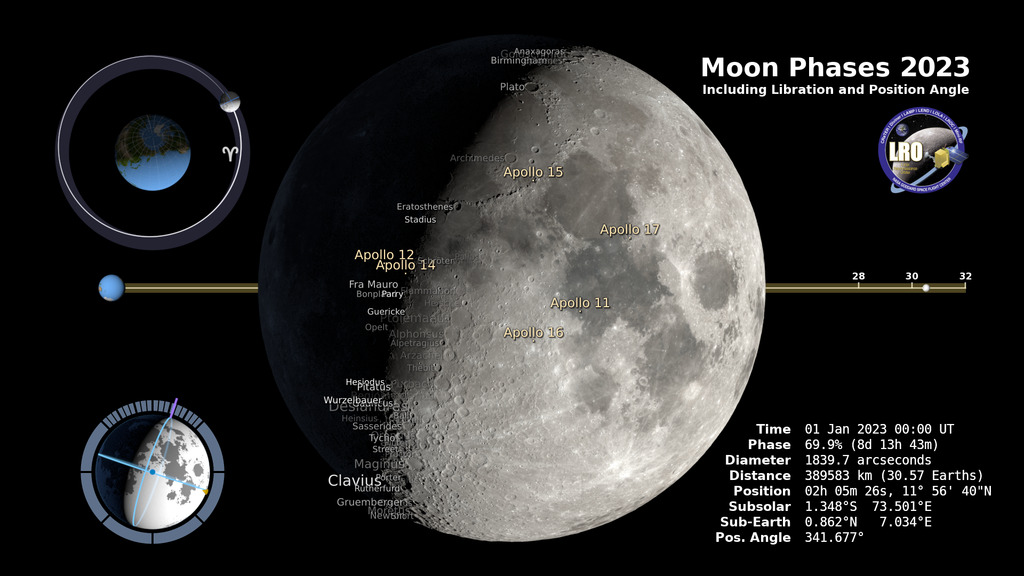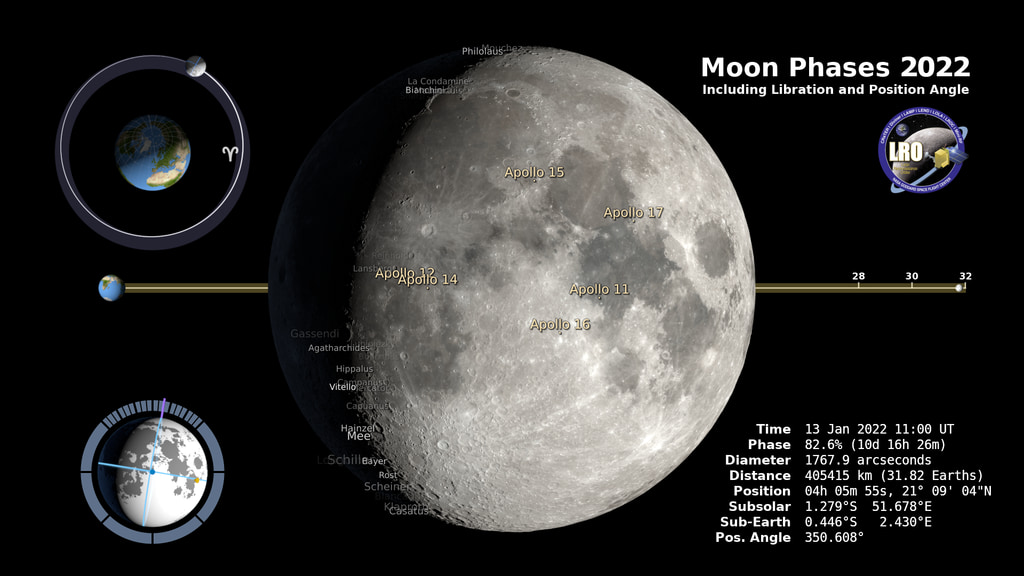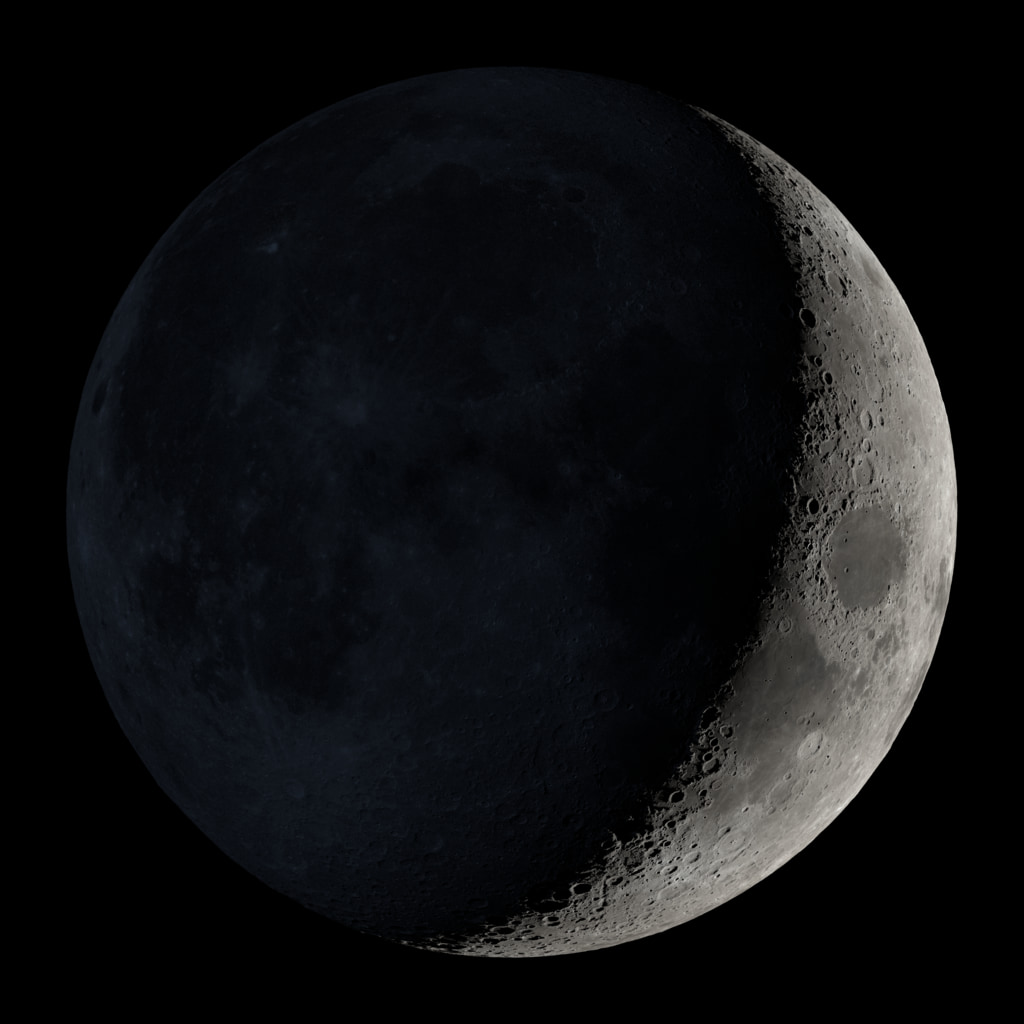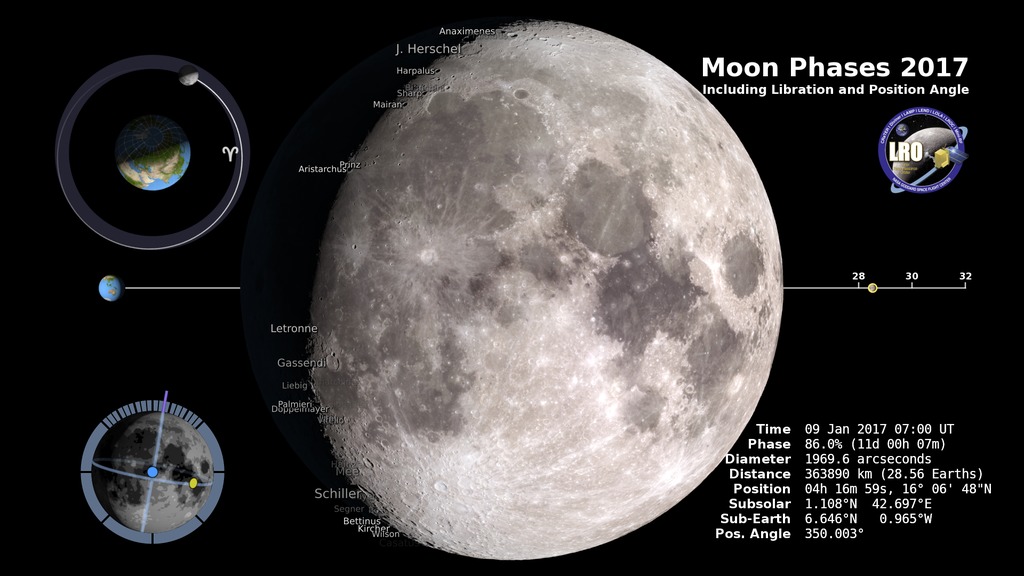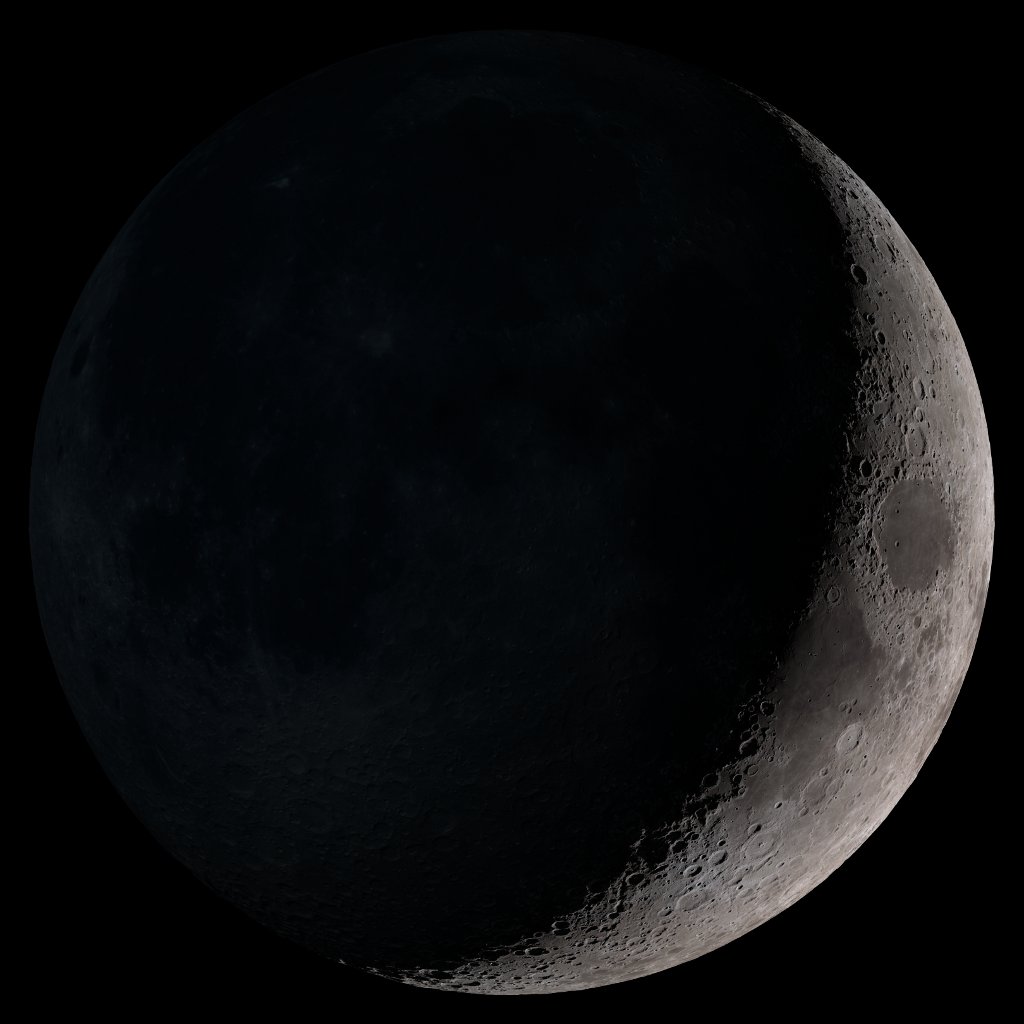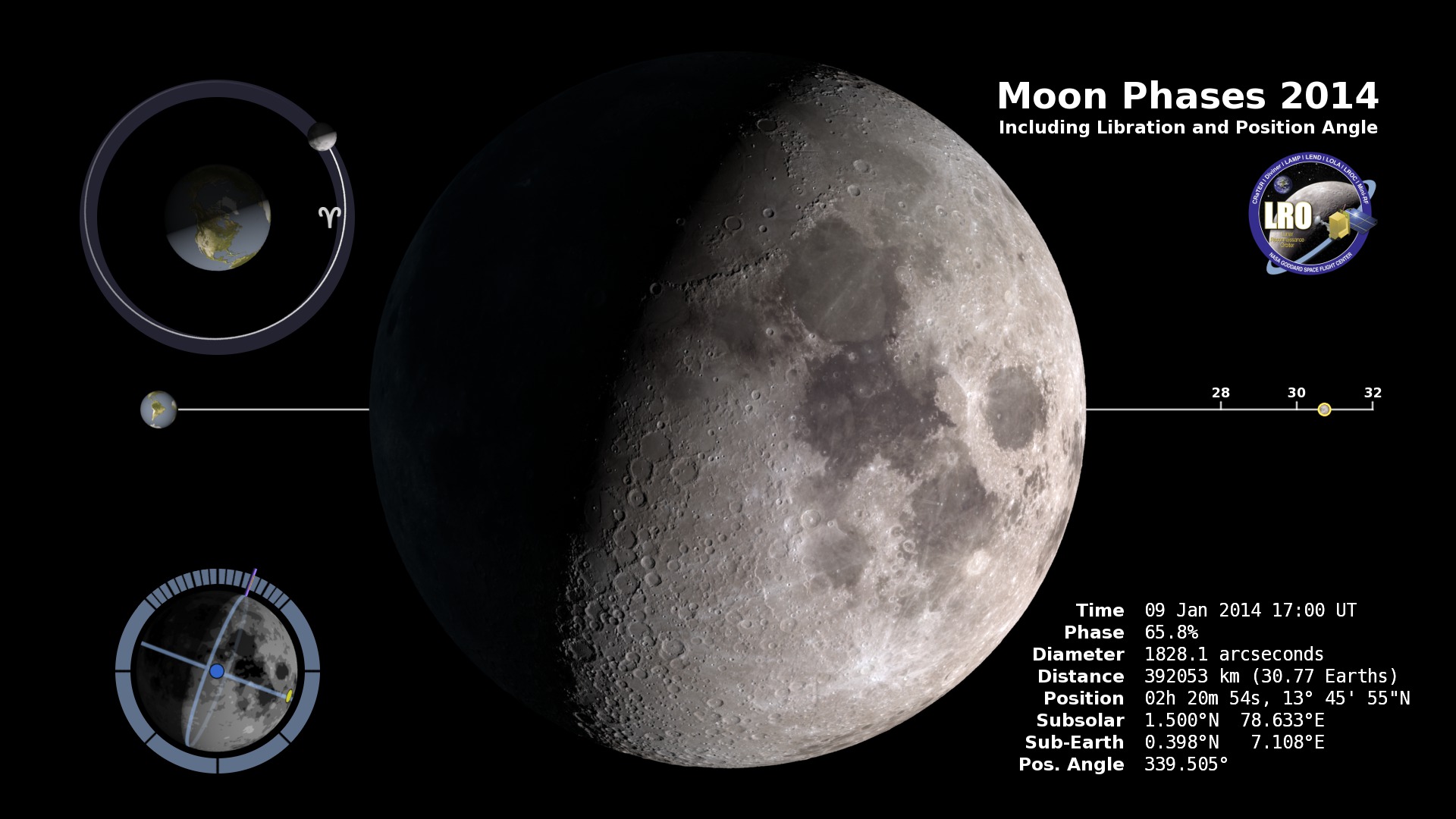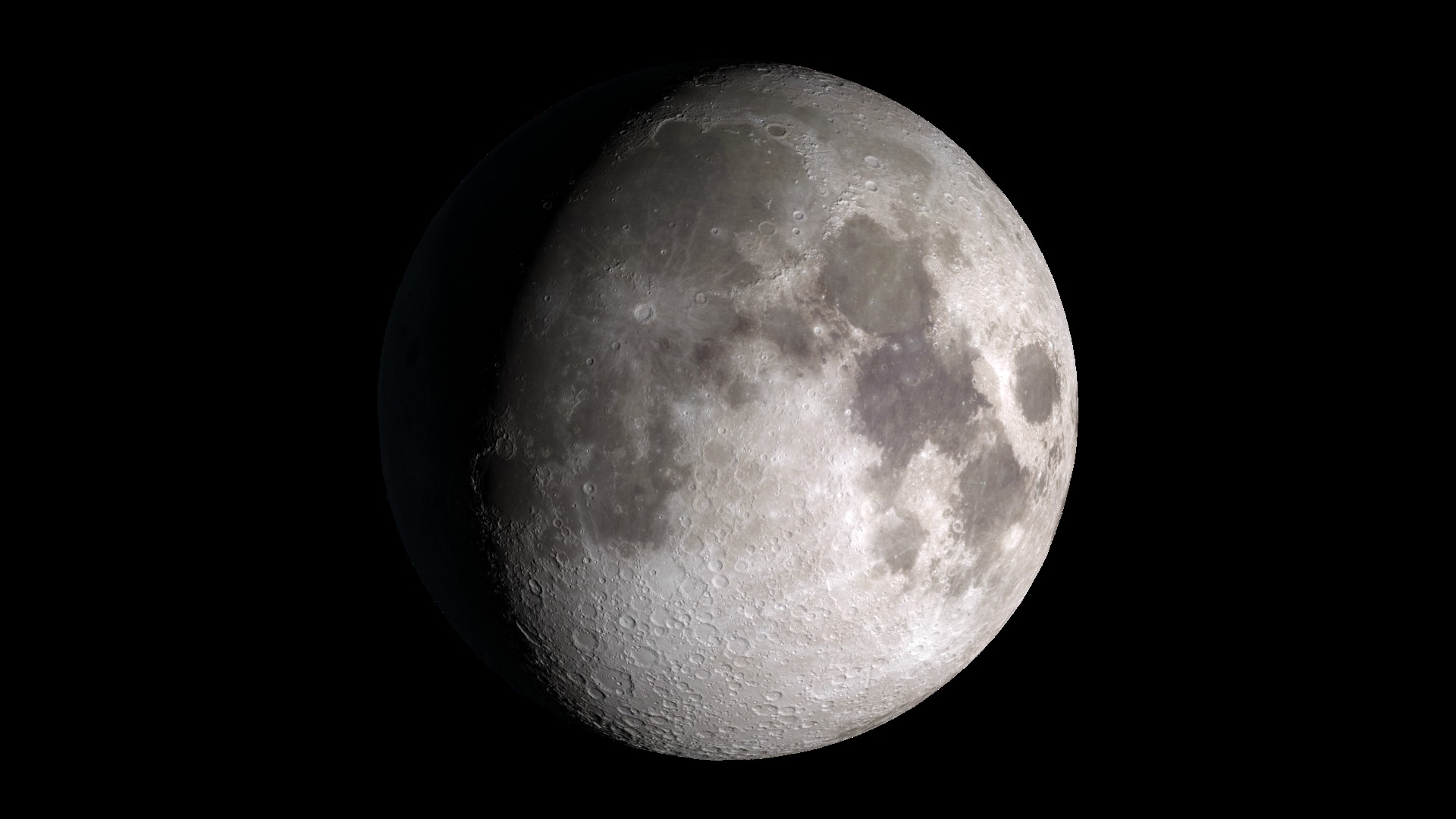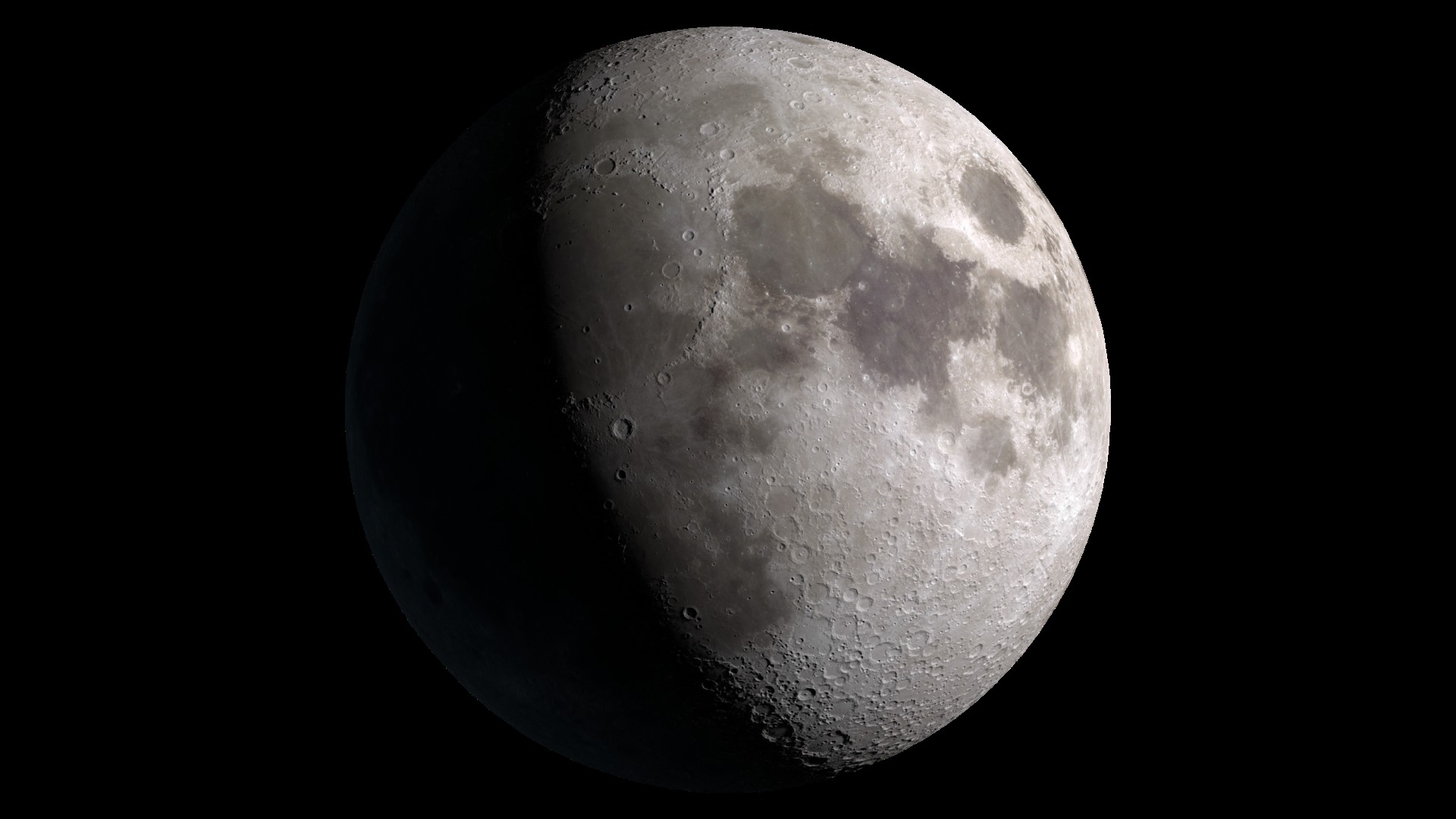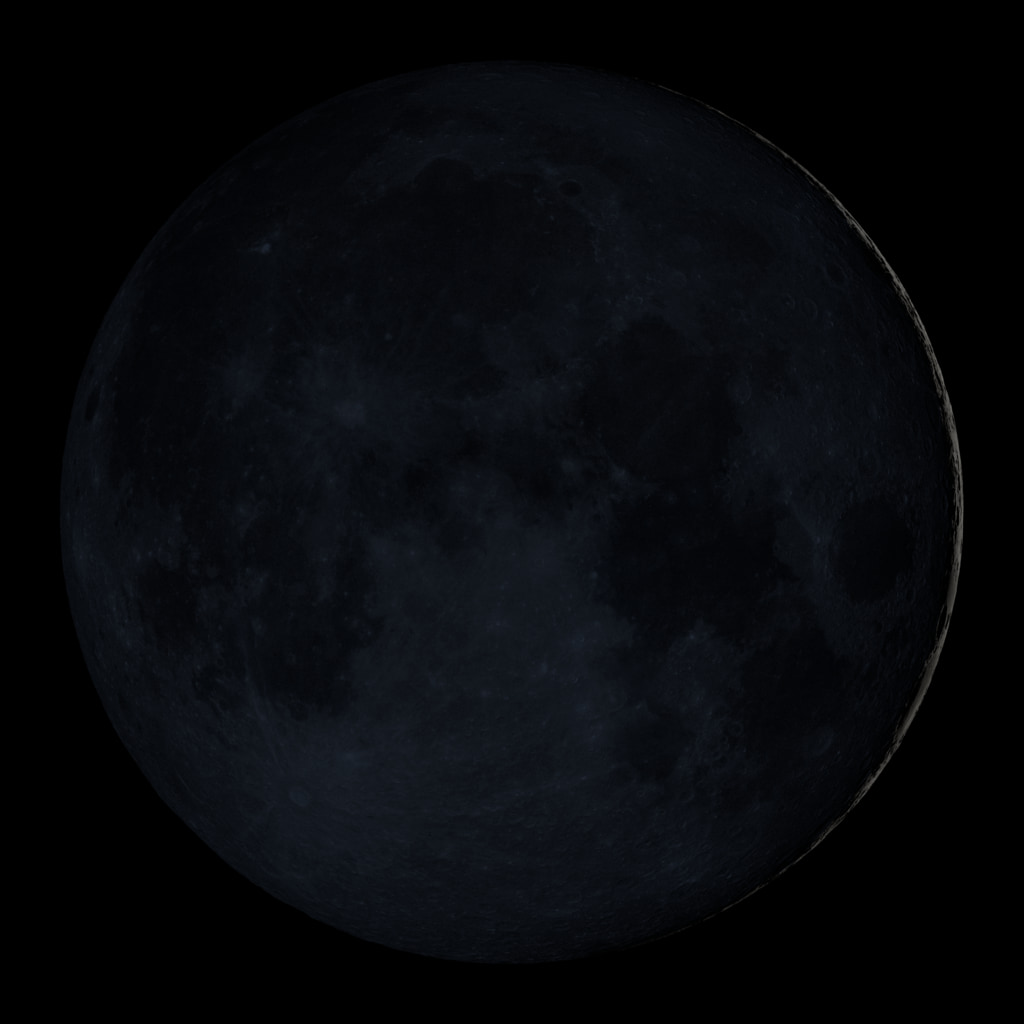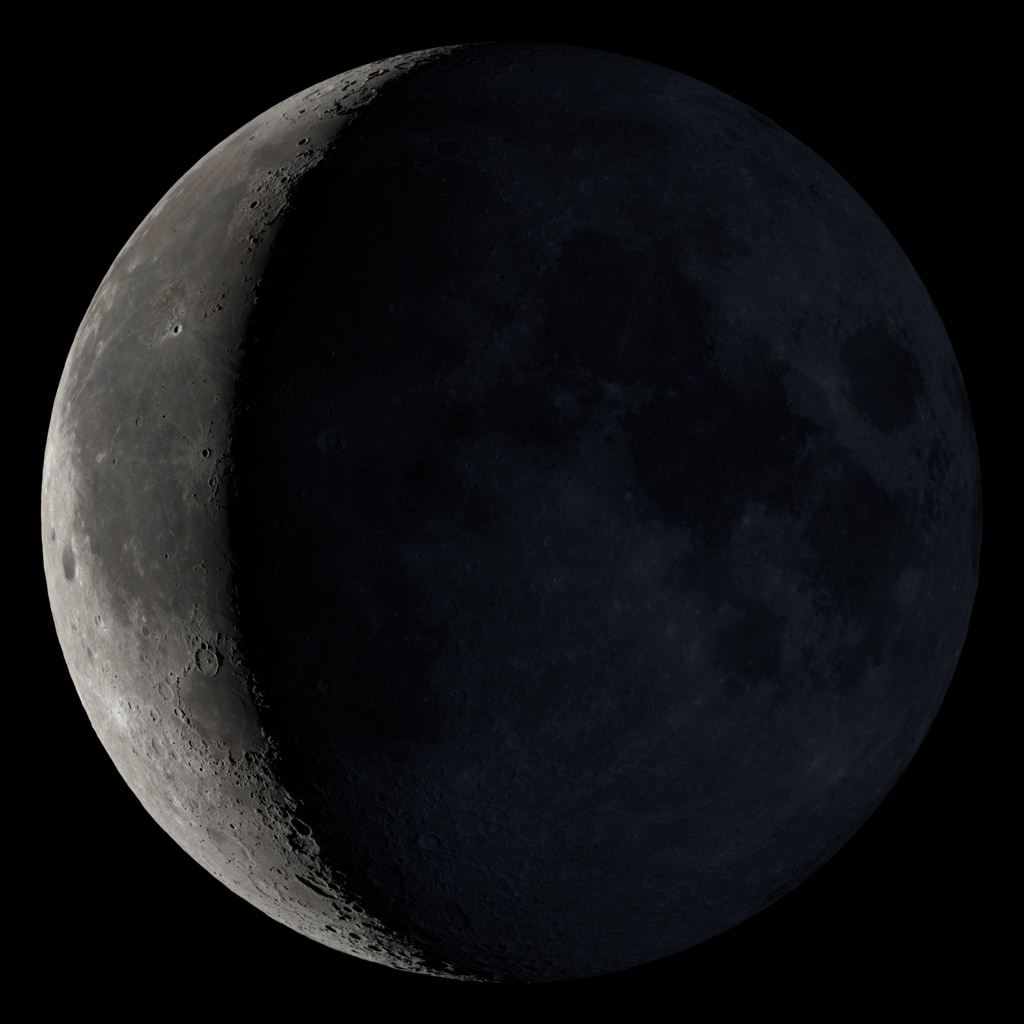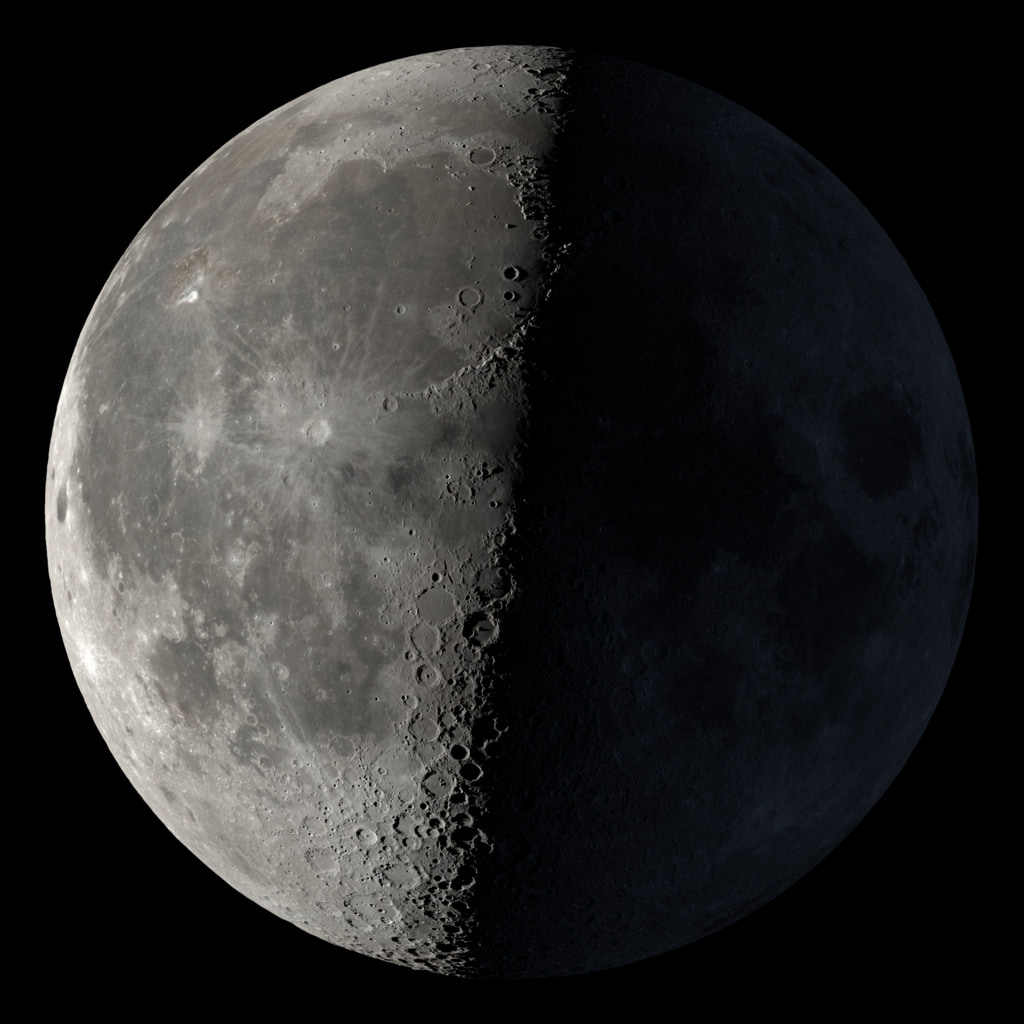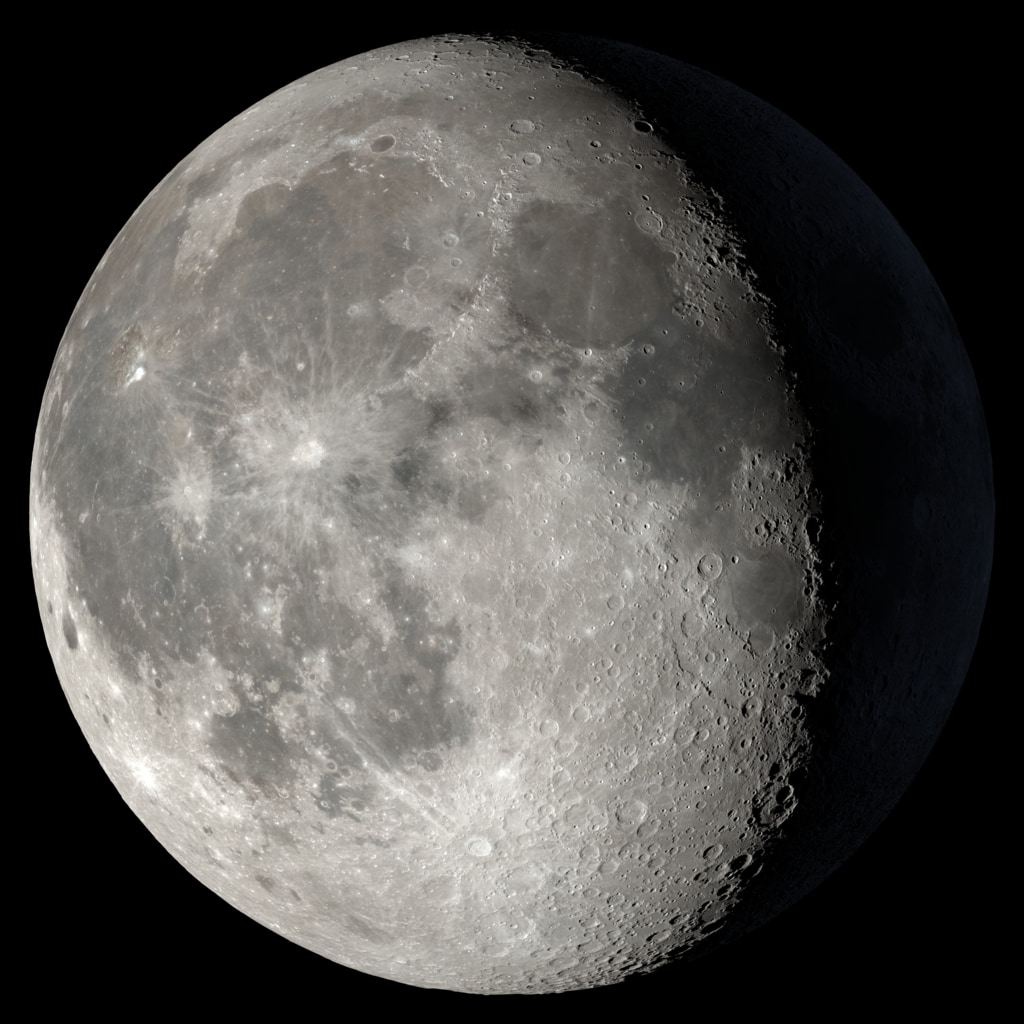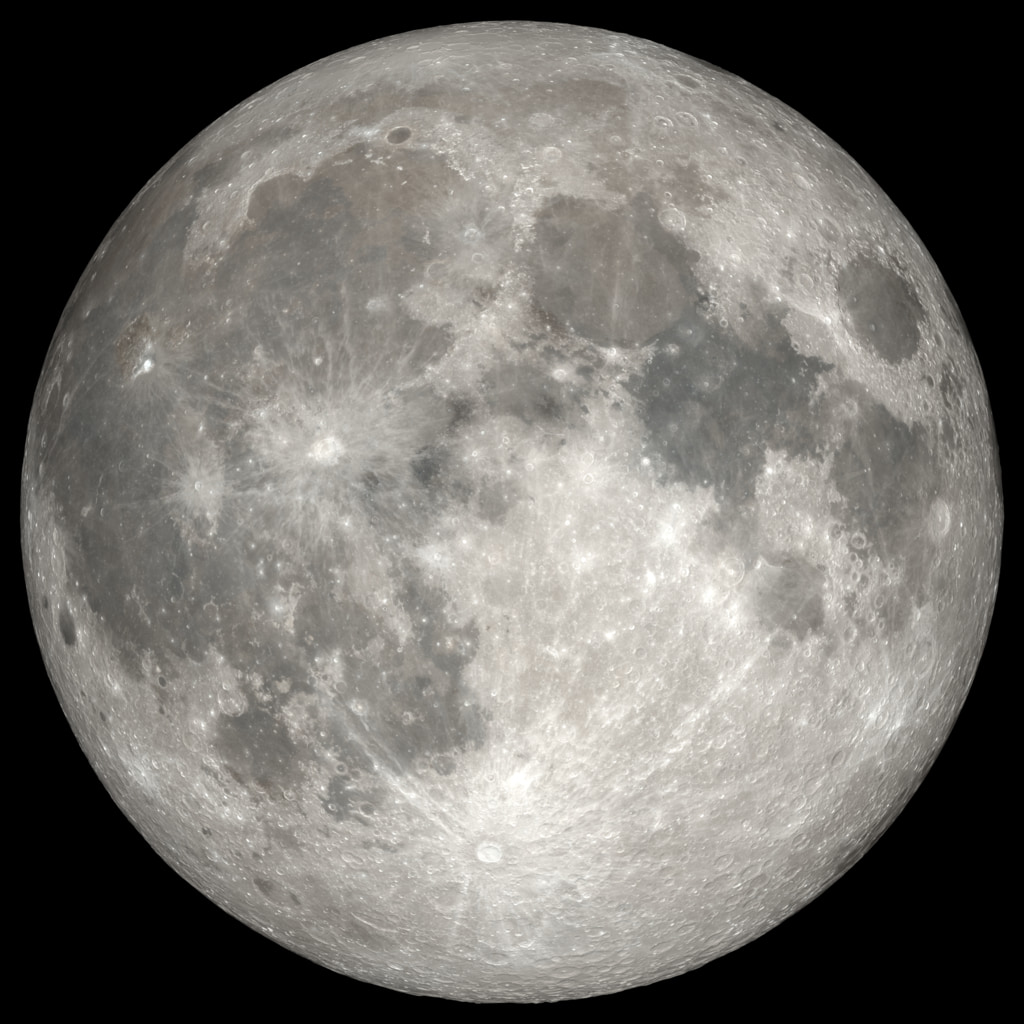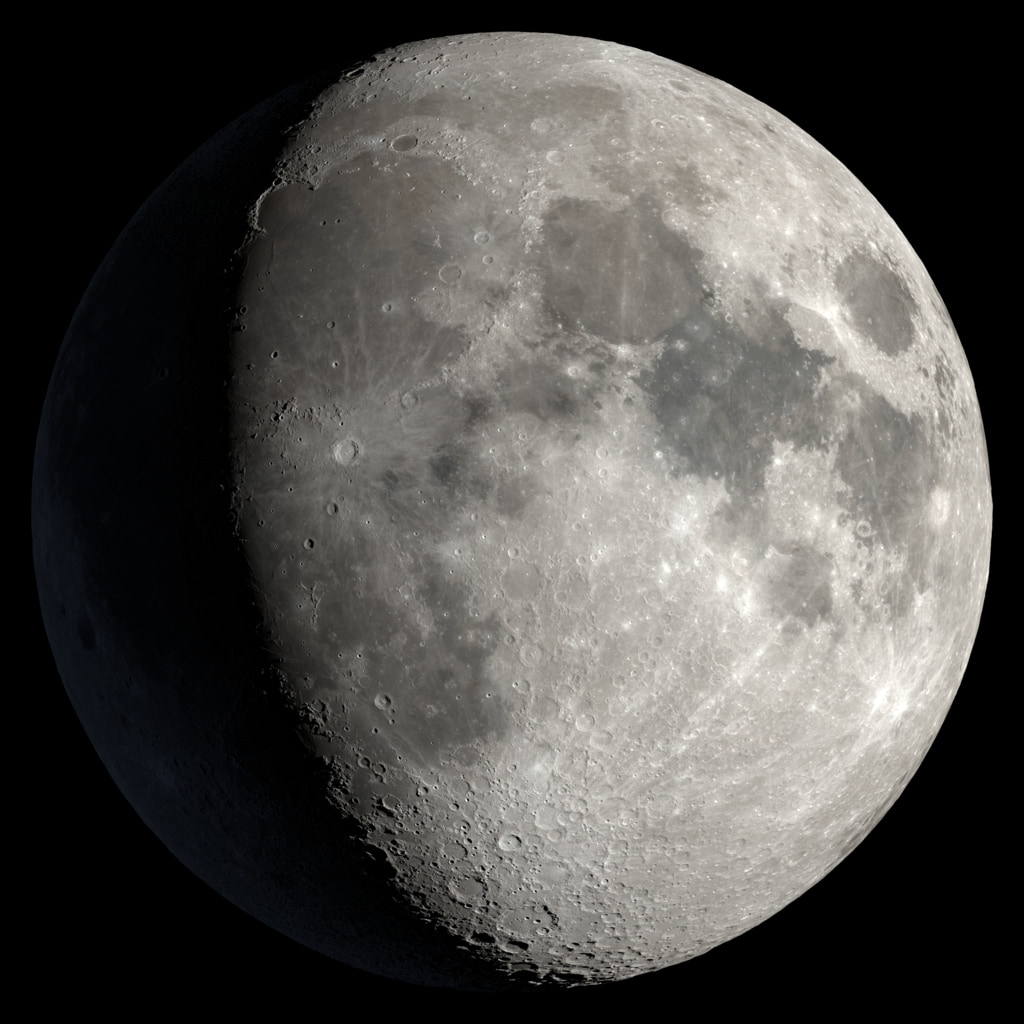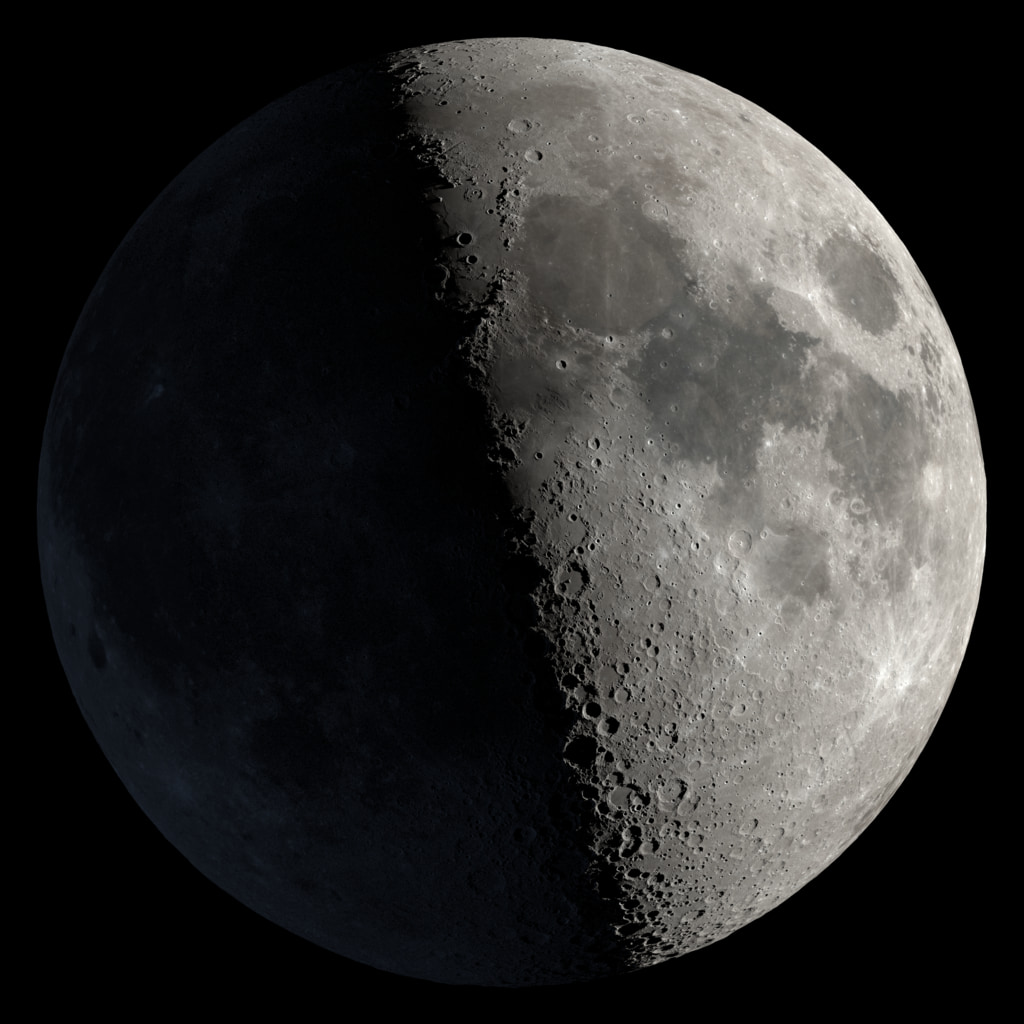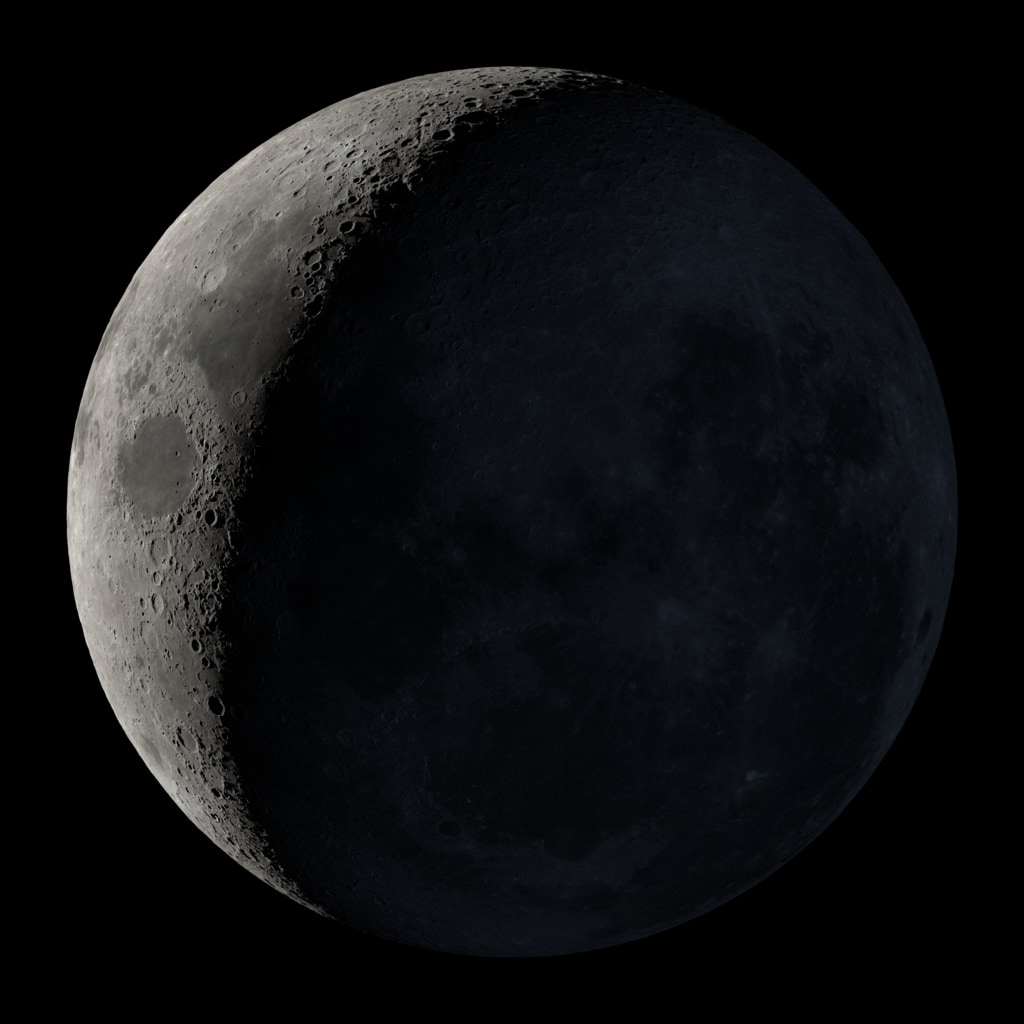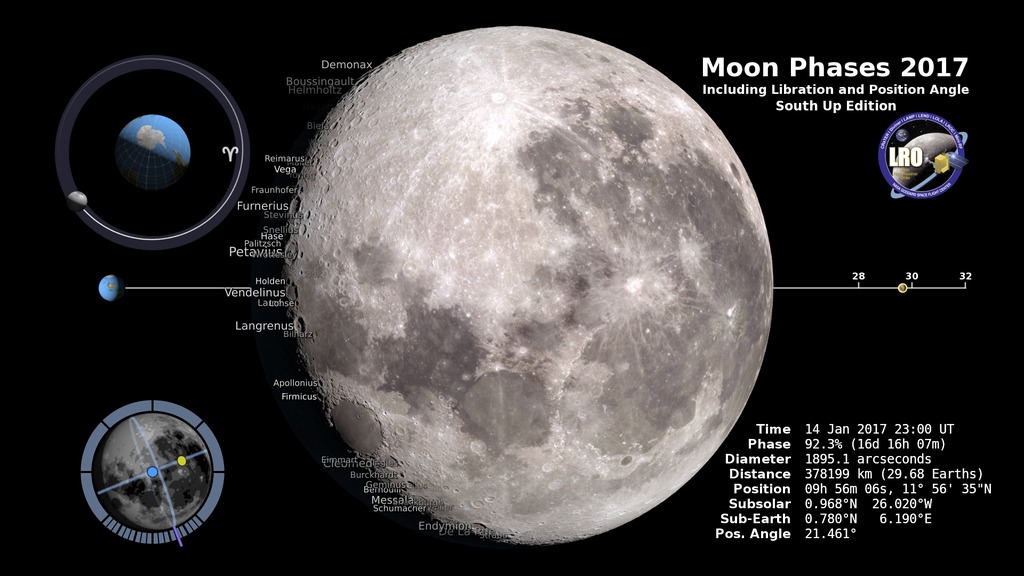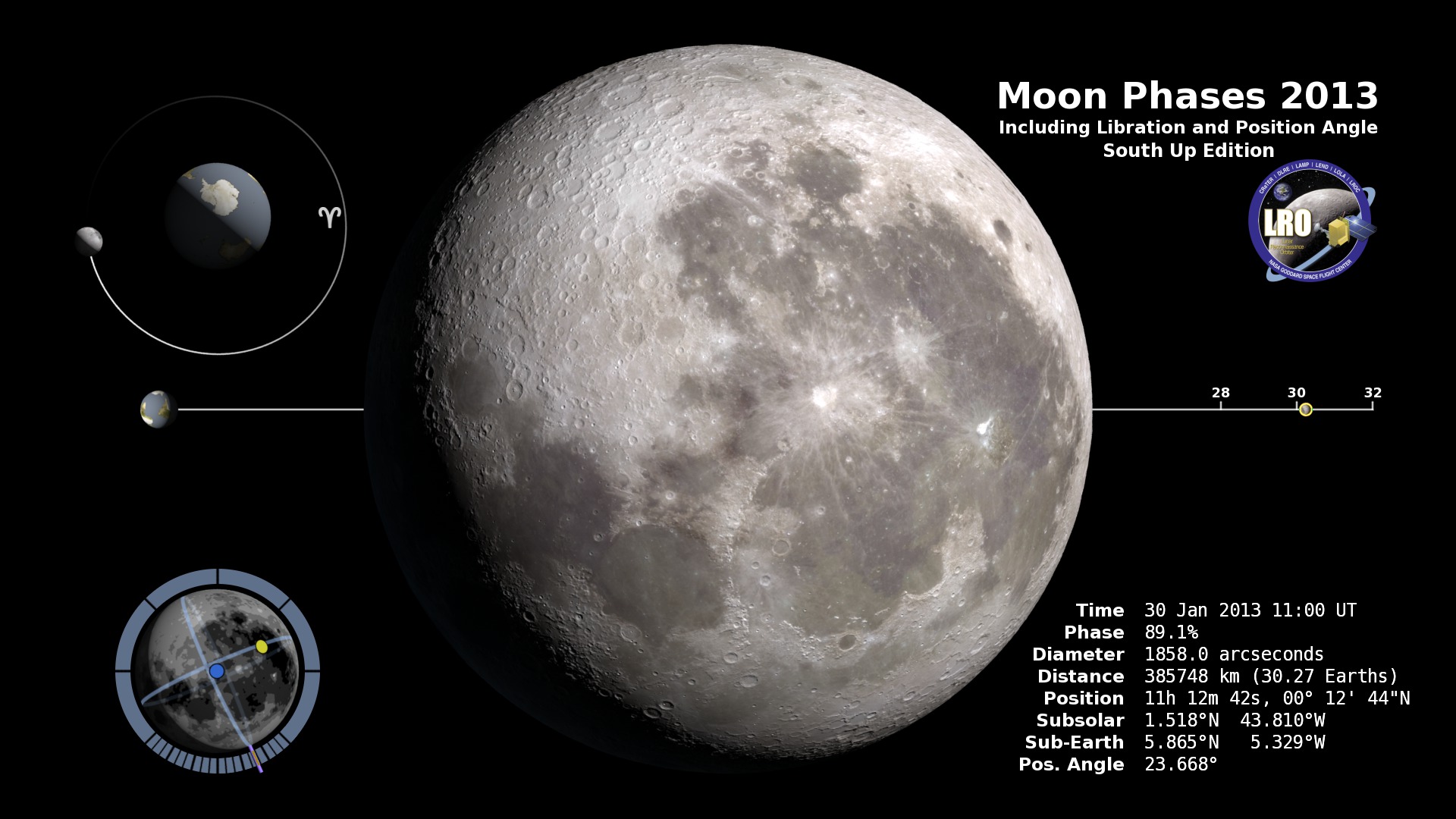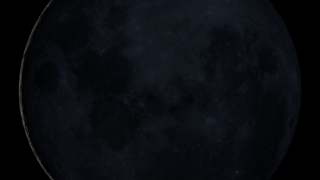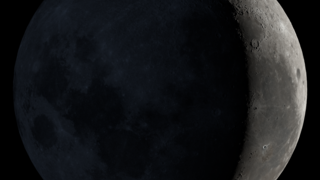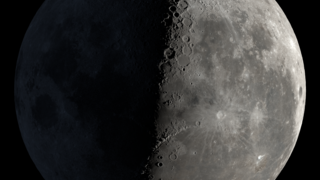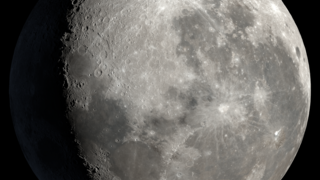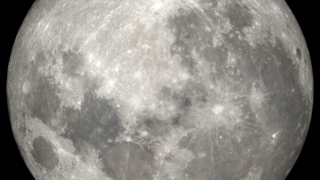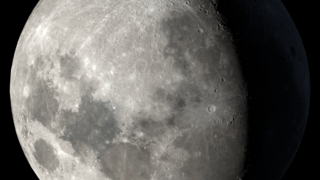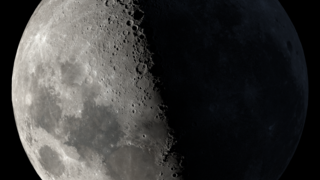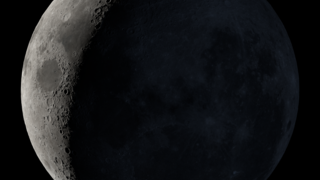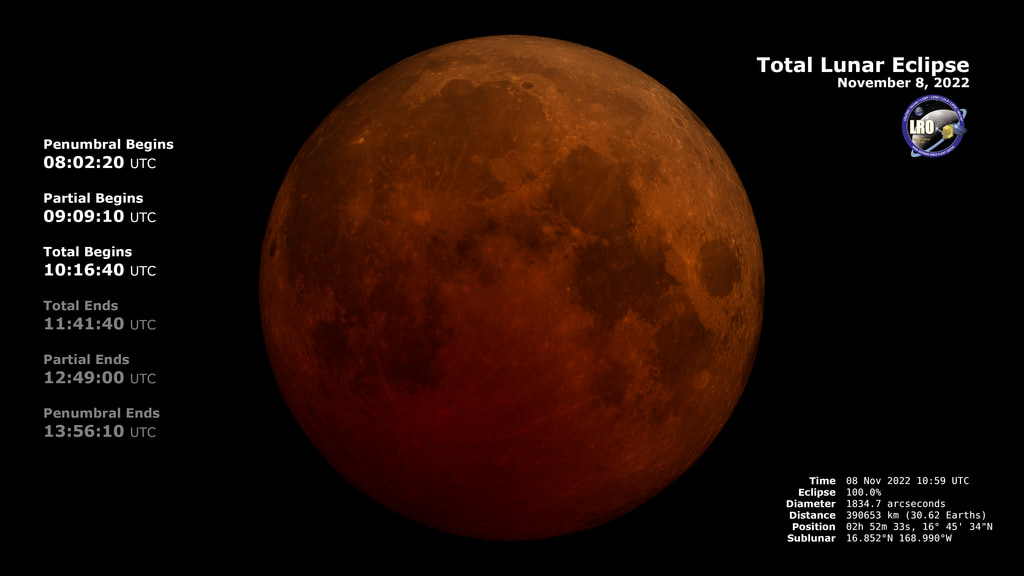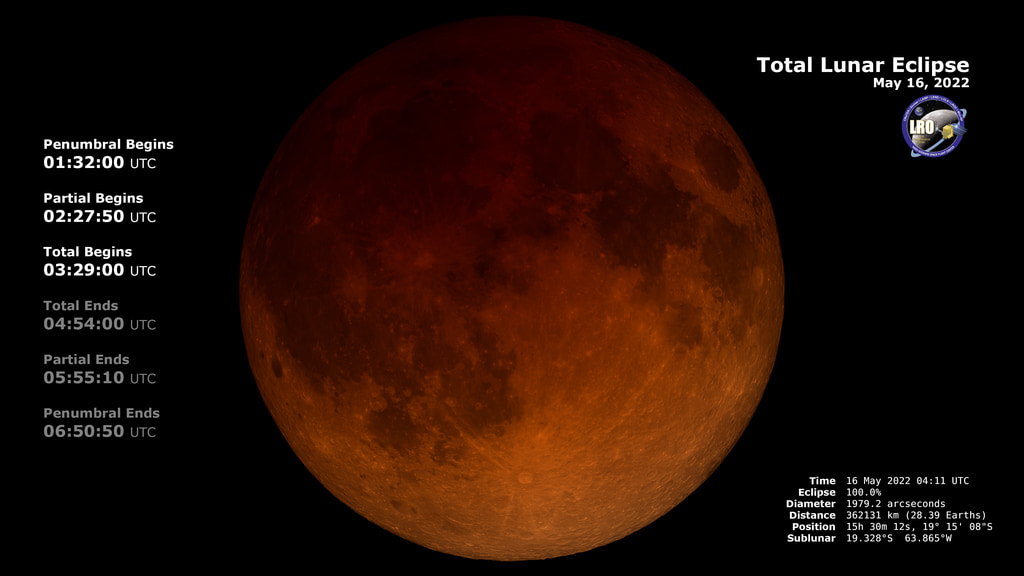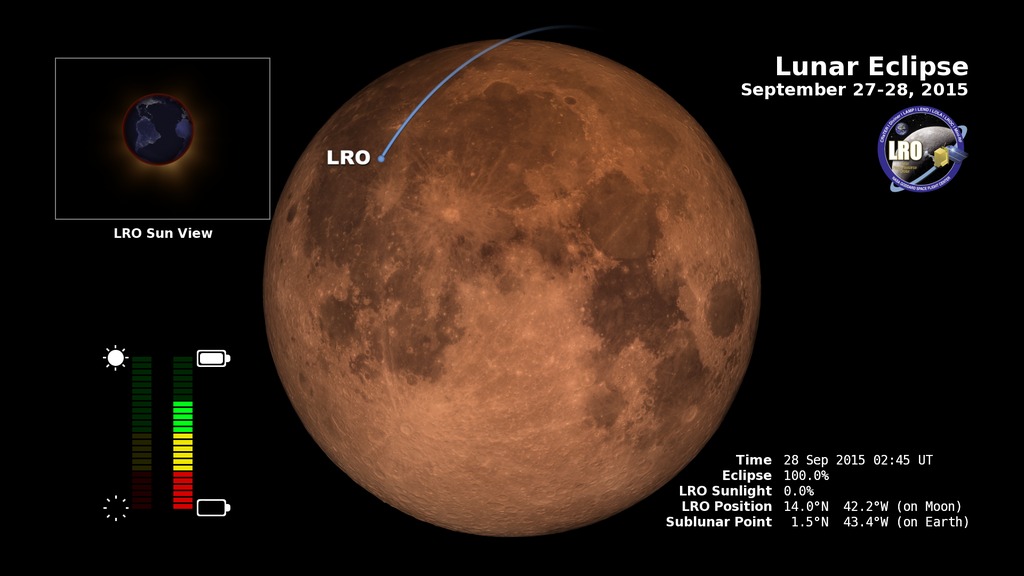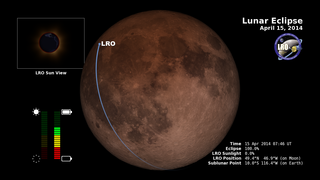Moon Phase and Libration
Dial-A-Moon
Enter a time to see what the moon looked like (or will look like) at that time.
| Time (UTC) | 2023-01-01T00:00 |
|---|---|
| Phase | 00.0% (0d 0h 0m) |
| Diameter | 0000.0 arcseconds |
| Distance | 00.0 km (0.00 Earth diameters) |
| J2000 Right Ascension, Declination | 0h 0m 0s, 0° 0' 0" |
| Sub-Solar Longitude, Latitude | 0.000°, 0.000° |
| Sub-Earth Longitude, Latitude | 0.000°, 0.000° |
| Position Angle | 0.000° |
Every year since 2011, the SVS produces its annual visualization of the Moon's phase and libration comprising 8760 hourly renderings of the precise size, orientation, and illumination of our nearest neighbor in space. The above displays the current state of the Moon. Click on the image to download a much larger version with labeled craters and additional graphics. Follow the links below to see the Moon at any hour of the year, play the animations, access the frames at multiple resolutions, and read detailed explanations.
North Up
- Visualization
- Visualization
- Visualization
- Visualization
- Visualization
- Visualization
- Visualization
- Visualization
- Visualization
- Visualization
- Visualization
- Visualization
- Visualization
- Visualization
- Section
- Section
- Section
- Section
- Section
- Section
- Section
- Section
South Up
- Visualization
- Visualization
- Visualization
- Visualization
- Visualization
- Visualization
- Visualization
- Visualization
- Visualization
- Visualization
- Visualization
- Visualization
- Section
- Section
- Section
- Section
- Section
- Section
- Section
- Section
Eclipses
These lunar eclipse visualizations include a Dial-a-Moon feature similar to that of the phase and libration pages.
LRO and the September 27-28, 2015 Lunar Eclipse: Telescopic View
Go to this page|| || eclipse.0001.jpg (730x730) [98.8 KB] || eclipse.0001.tif (1920x1080) [2.4 MB] ||
LRO and the Lunar Eclipse of April 15, 2014: Telescopic View
Go to this page|| || eclipse.0001.jpg (730x730) [104.6 KB] || eclipse.0001.tif (1920x1080) [2.5 MB] ||

